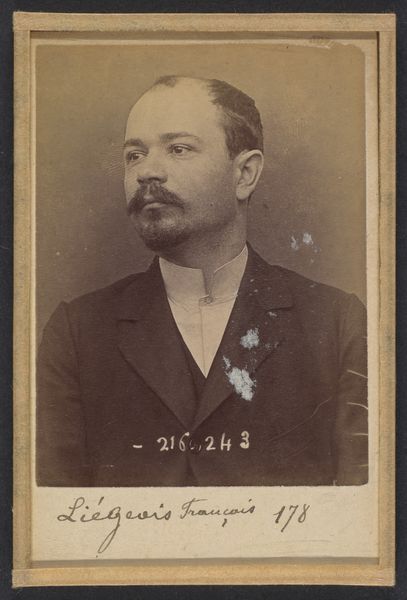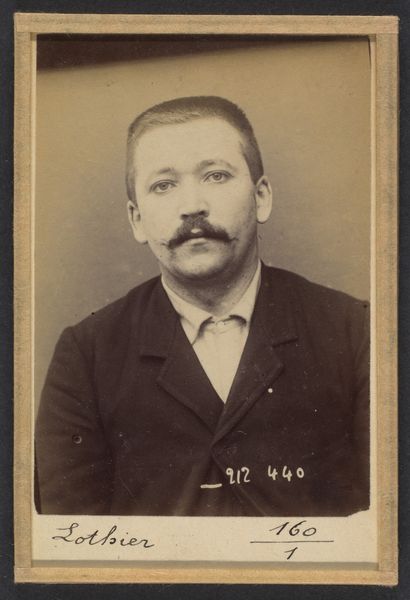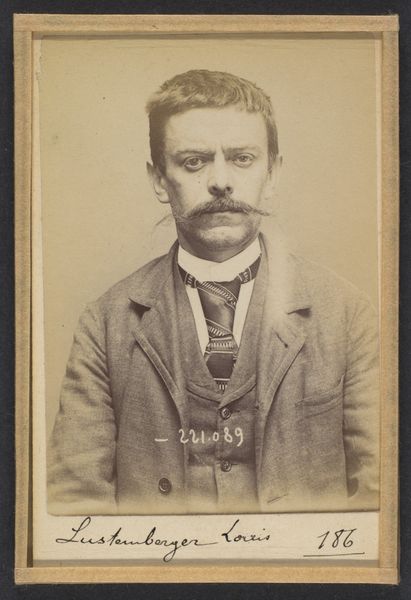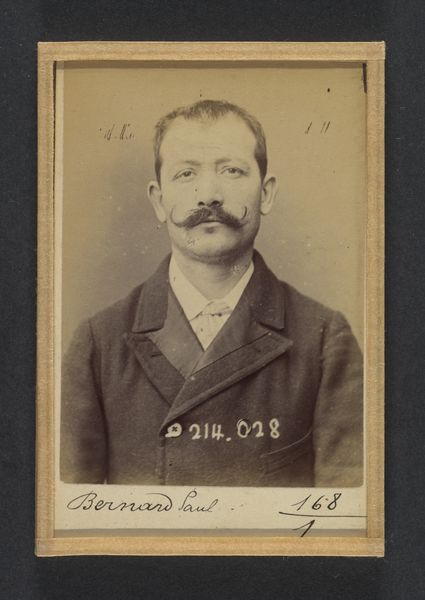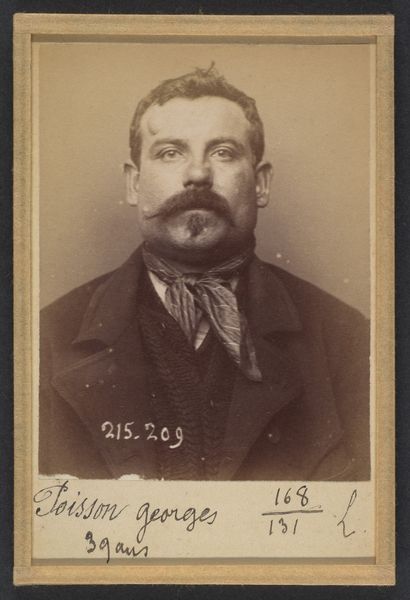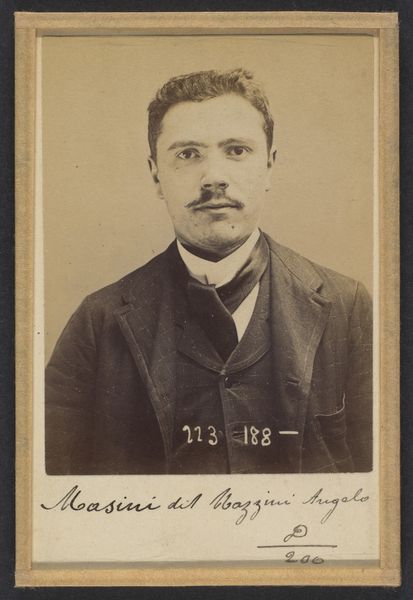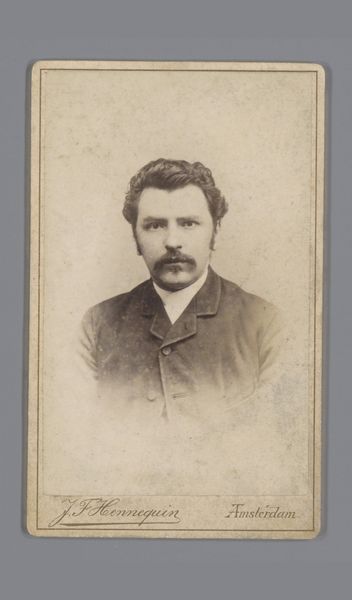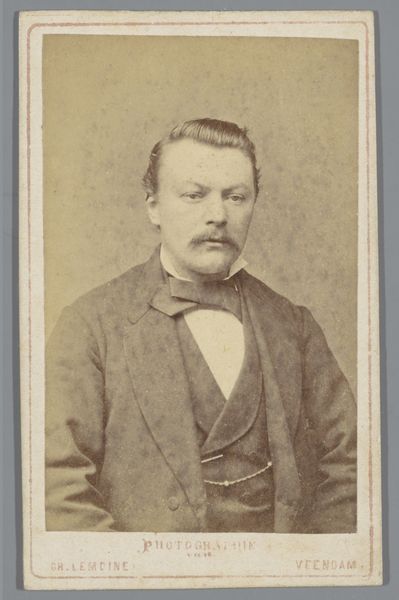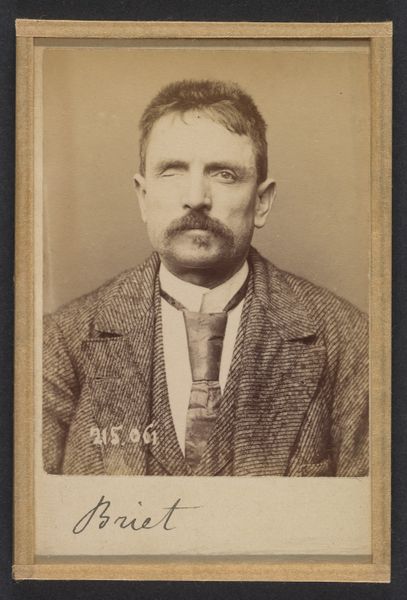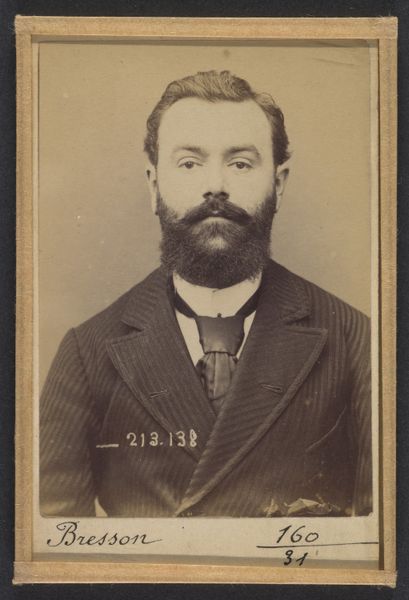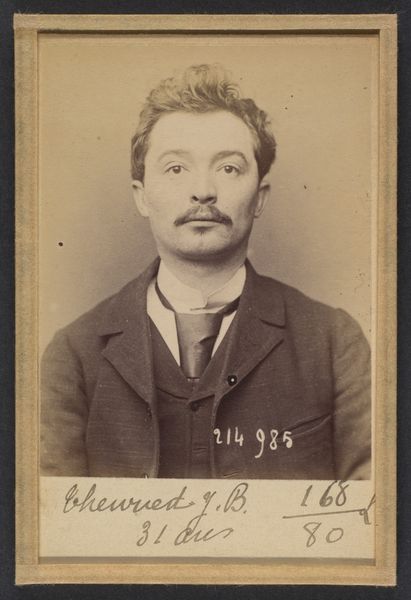
Bossard. Célestin. 33 ans, né le 5/3/61 à Gonbretière (Vendée). Cordonnier. Anarchiste. 2/7/94 1894
0:00
0:00
photography, gelatin-silver-print
#
portrait
#
portrait
#
photography
#
gelatin-silver-print
Dimensions: 10.5 x 7 x 0.5 cm (4 1/8 x 2 3/4 x 3/16 in.) each
Copyright: Public Domain
Curator: This photograph, a gelatin silver print titled "Bossard. Célestin. 33 ans," dates back to 1894 and is by Alphonse Bertillon. Its subject, Célestin Bossard, is identified as a 33-year-old anarchist shoemaker from Gonbretière, Vendée. Editor: It's unsettling, isn't it? There's something so stark about the sepia tone and direct gaze, almost accusatory. He's wearing a striped jacket, and something about the way he holds himself is sad and defiant all at once. Curator: Bertillon pioneered forensic photography, and this is very likely a mugshot. He sought to standardize crime scene documentation, using photography as an objective tool. Bossard's case, recorded alongside his profession and political leaning, encapsulates a specific moment of social anxiety and the surveillance of dissent. The meticulously inscribed details at the bottom offer more than a simple image: they are a piece of early criminal profiling. Editor: The label of "anarchist" feels particularly heavy here. It reduces a life, a belief system, to a single, suspect word scrawled on the frame. Look at the mustache, too - it seems purposefully theatrical, maybe a hint of performance even in a coerced portrait like this one. Was he aware of being branded? Curator: Anarchism in 1890s France held diverse meanings, and in a period marked by increasing industrialization and social unrest, it would certainly cast suspicion on someone like Bossard. The photograph becomes a visual document of social control, capturing an individual at the crossroads of personal identity and political threat. Editor: And isn't that what art does? Even a mugshot meant for something cold and procedural ends up reflecting a human story back at us, one tangled up in its historical moment, forcing us to imagine him. What were his days like? Curator: Precisely. The inscription and stark aesthetic work together. The objective and subjective entwine to allow us access to a poignant moment in social history and the man within it. Editor: Right. Looking at this photograph has changed the way I perceive our social past, it seems both close and disturbingly far away. A ghost with a name.
Comments
No comments
Be the first to comment and join the conversation on the ultimate creative platform.
